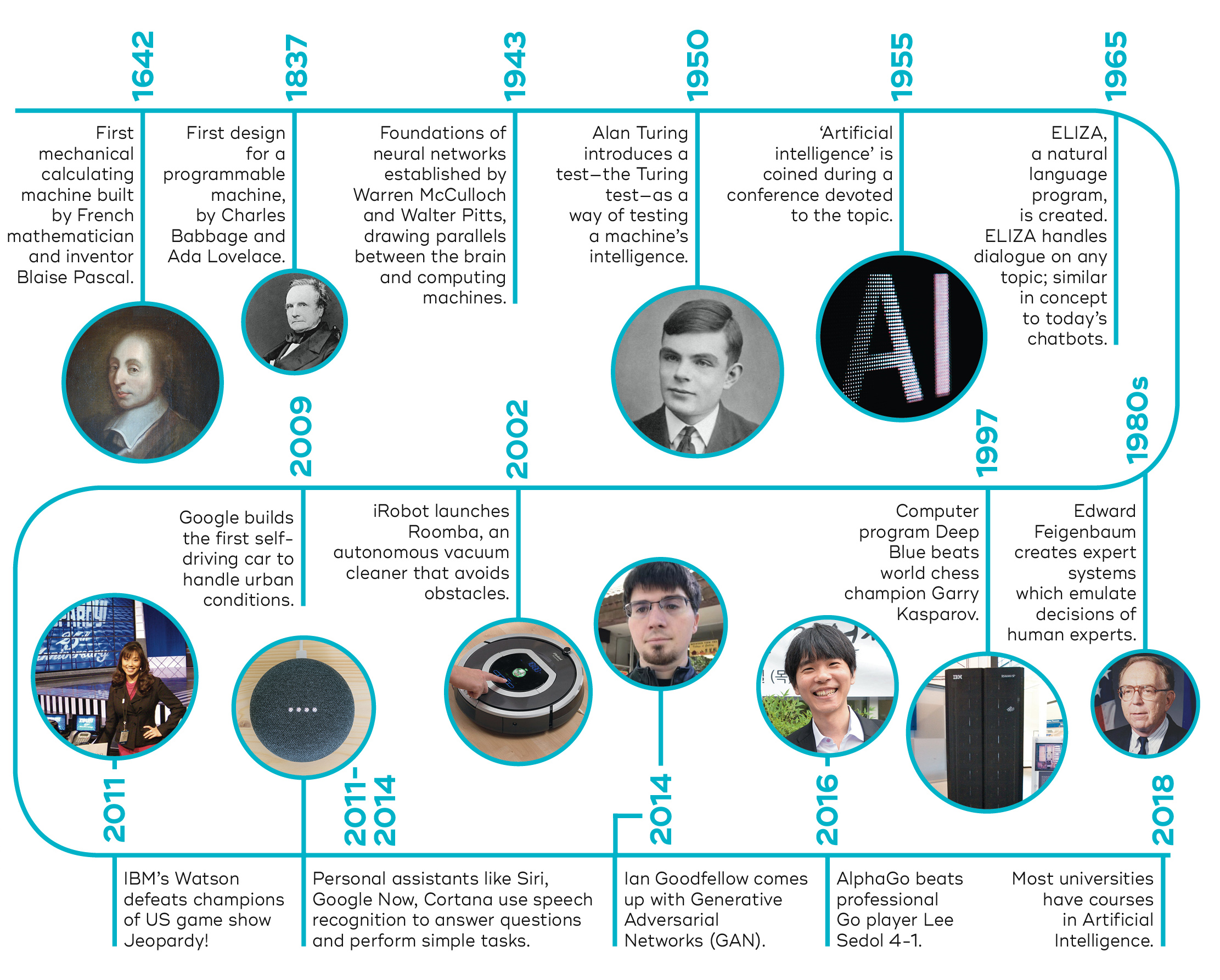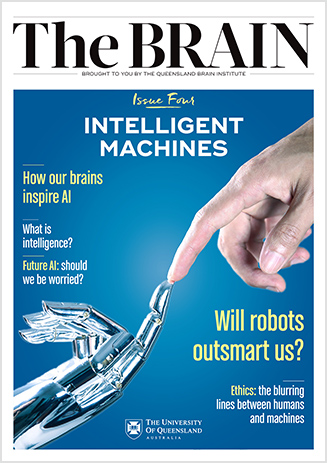History of Artificial Intelligence

Modern AI began in the 1950s with the view to solving complex mathematical problems and creating 'thinking machines'. From the outset, there were two competing approaches. One used formal rules to manipulate symbols, a logic-based approach not at all based on biology. This became known as ‘good old-fashioned artificial intelligence’: GOFAI. The other camp took inspiration from how the brain works and created ‘artificial neural networks’ loosely inspired by our brains. These still had to be trained using certain procedures to solve problems.
In the first 20 years, GOFAI was the more successful approach, leading to much hype and significant government funding. But in real-world settings GOFAI didn't achieve its outcomes. Artificial neural networks also struggled, and in the 1970s funding dried up, research slowed and the AI community shrank. In the 1980s, improvements were made in both the rules-based GOFAI systems and biologically-inspired neural networks. Previously difficult problems became achievable and AI seemed promising once again. However, the hope and hype exceeded reality, and by the 1990s AI research again diminished.
The latest surge of interest comes off the back of the power of deep learning, a type of biologically-inspired neural network that harnesses the huge amounts of data now available, and the massive computational power and speed of today’s computers.
With enormous data sets, modern AI neural networks can often exceed human performance in many tasks, including pattern recognition and playing games like Go, previously very difficult for AI. Importantly, these systems can learn from experience, unlike GOFAI.
AI's ubiquity might now appear like it's not far off reaching human-level intelligence. But AI needs massive amounts of data to learn, unlike our brains, which can learn from a single experience.
Some researchers argue that for AI to advance further, more needs to be understood about the basic principles of how our brains function, and the kinds of biological shortcuts our brains take to complete tasks.

